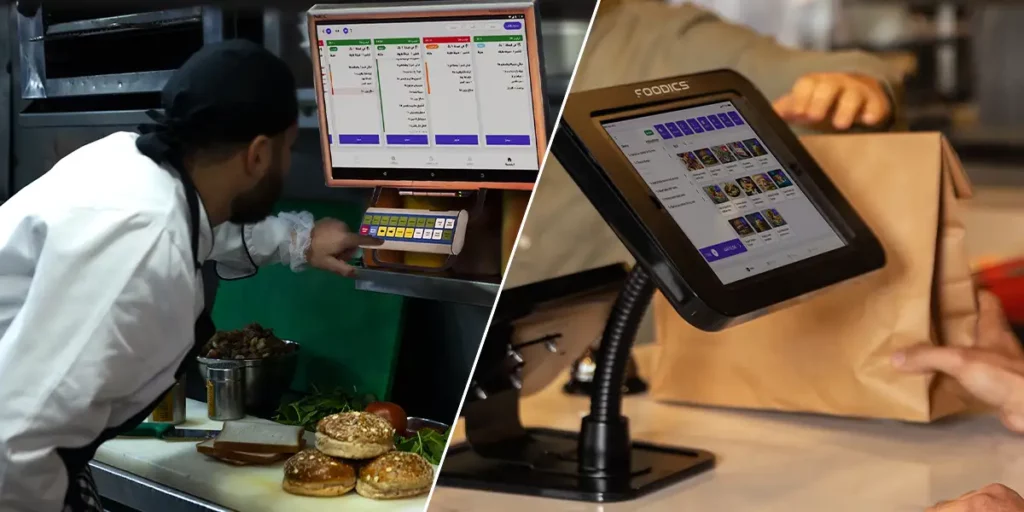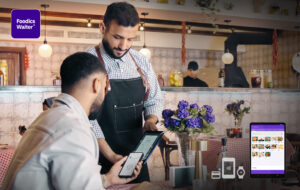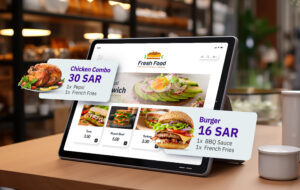At the heart of every successful restaurant lies efficient kitchen communication. It’s a dynamic process that revolves around seamless coordination between the front-of-house staff – the ones serving and engaging with guests, and the back-of-house team – comprising the talented chefs and kitchen staff responsible for crafting delightful dishes. When these two components work in perfect harmony, the entire dining experience reaches new heights, leaving customers satisfied and the business thriving.
In this article, we’ll delve into essential strategies for improving staff communication between the front-of-house and back-of-house teams.
Improving Kitchen Communication
1- Regular Team Meetings
One effective way to enhance kitchen communication is by conducting regular team meetings. These meetings provide an opportunity for both front-of-house (FOH) and back-of-house (BOH) staff to come together and discuss important matters. During these gatherings, you can address challenges, exchange feedback, and brainstorm ways to enhance communication and teamwork. Additionally, it is a chance to address any concerns or issues that may have arisen since the meeting. Team meetings help foster a sense of unity among staff members and ensure everyone is aligned with the restaurant’s objectives ultimately leading to operations.
2- Designate Point of Contact and Chain of Command
In a bustling restaurant, the last thing anyone wants is chaos caused by numerous individuals relaying information to the kitchen. To maintain organization and efficiency, successful restaurants often assign one person as the point of contact between FOH and BOH. This role is commonly fulfilled by the general manager or shift manager.
Having a designated point of contact in the FOH to communicate with a specific counterpart in the kitchen streamlines the information flow. This ensures that service remains smooth, even during the busiest times. Whether it’s addressing customer requests or handling any issues that arise, having a clear chain of command guarantees that matters are promptly and effectively dealt with.
3- Facilitate Communication with Technology
POS Integration
POS systems are inarguably one of the paramount staff communication tools between the kitchen and the front house. Integrating a well-structured POS system, namely the All-In-One Point of Sale Solution from Foodics, can streamline the process, ensuring the kitchen staff receives accurate and timely information about incoming orders.
POS systems offer various functions that strengthen communication between FOH and BOH. Restaurants must agree on how to utilize these tools effectively. Our Foodics Kitchen Display Screen, for instance, allows seamless transmission of orders from the POS system directly to the kitchen. Orders can be routed based on preparation location and order type, and any delays trigger notifications, keeping everyone informed and on the same page.
Apps & Other Tools
Employing effective employee communication tools can significantly minimize misunderstandings and friction among your staff.
Consider integrating restaurant-friendly apps that streamline operations by automating scheduling, sending menu updates, alerts, announcements, and real-time kitchen and floor status to all team members with a simple click. This ensures that everyone receives accurate information promptly, reducing delays and potential miscommunications. Moreover, these apps offer specific-group chats and one-on-one conversations, providing excellent avenues for sharing personal updates with the team.
4- Cross-Training
Another valuable approach to enhance kitchen communication is through cross-training. This involves training FOH staff on some BOH tasks and vice versa. Cross training ensures that everyone has an understanding of the challenges and responsibilities faced by their counterparts.
5- Feedback System
Establishing a feedback system is crucial for continuous improvement in kitchen communication. Create a structured mechanism for both FOH and BOH staff to provide feedback on their experiences. Encourage them to share insights, challenges, and suggestions on how to enhance communication. This feedback loop can help identify issues that might go unnoticed and allow for timely adjustments.
6- Impeccable Understanding of the Menu
Effective communication between the front of house and back of house is crucial, especially when it comes to the restaurant menu. Seamless coordination ensures a smooth dining experience for guests. Here are a few examples that highlight the significance of menu-related communication:
Knowledgeable Servers
In a successful restaurant, servers must possess in-depth knowledge about the menu. They should be well-versed in dish descriptions, ingredients, and potential allergens to provide accurate information to customers. For instance, if a guest inquires about gluten-free options, the server should confidently recommend suitable dishes and alert the kitchen about any specific dietary requirements.
Menu Updates and Information Sharing
The kitchen should keep the FOH team informed about any menu changes or specials. This ensures that servers can promptly inform guests about the latest offerings and any limited availability items.
Clear Communication on Substitutions
To avoid communication snafus, the kitchen staff should establish clear guidelines for permissible substitutions or adjustments to dishes. For instance, if a guest requests a certain ingredient replacement, servers should be aware of which substitutions are feasible and communicate these preferences accurately to the kitchen during service. This helps prevent misunderstandings and ensures that guests’ preferences are met.
Also read 8 Innovative Menu Ideas That Help You Drive Sales
7- Foster a Supportive Environment During Rush Hours
The rush hours in a restaurant can be extremely demanding, putting both the FOH and BOH staff under immense pressure. During these peak times, it is crucial to maintain a supportive and understanding environment. FOH staff should be patient when relaying orders to the kitchen, while BOH staff must acknowledge the urgency of service.
Fostering camaraderie during high-pressure moments not only reduces stress levels but also elevates kitchen communication. Organizing monthly events or gatherings for your team is a great approach to achieve this. Such initiatives allow team members to connect on a deeper level, fostering empathy and understanding toward each other’s temperament and character.
Also read Marketing Strategies for Restaurants to Adopt in Rush Hour
Wrapping Things Up
Lack of communication can lead a restaurant to its demise, regardless of the food quality or the exquisiteness of the dishes. Effective kitchen communication is crucial for ensuring smooth operations and providing adequate customer service. Utilize all the technological and human resources at your disposal to ensure everyone is on the same page. Make communication a priority and educate your team about its importance, making all necessary tools available to them.



